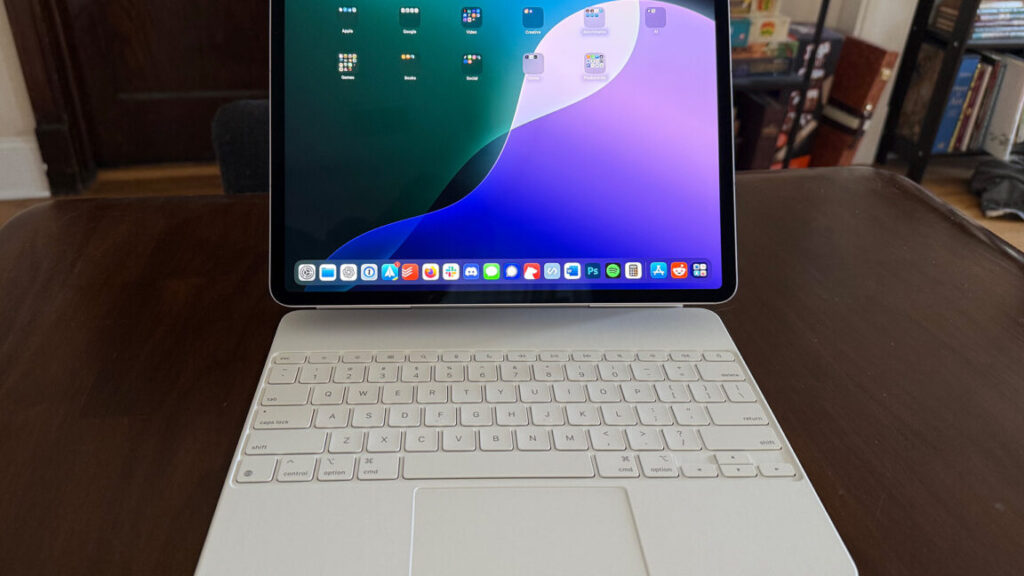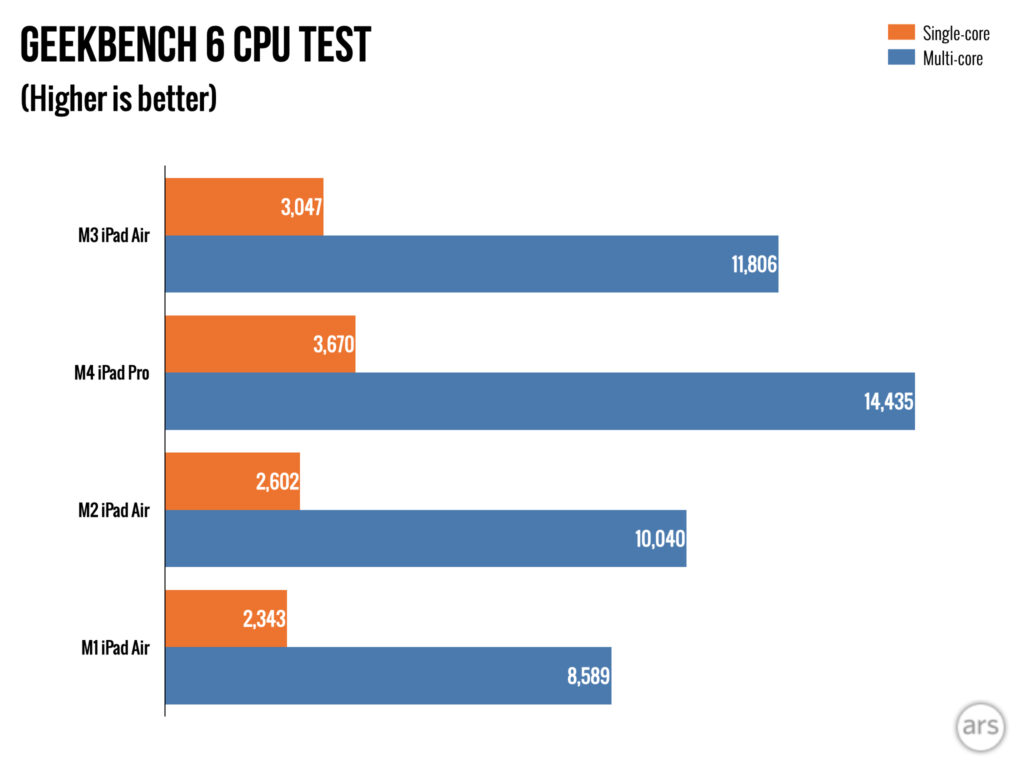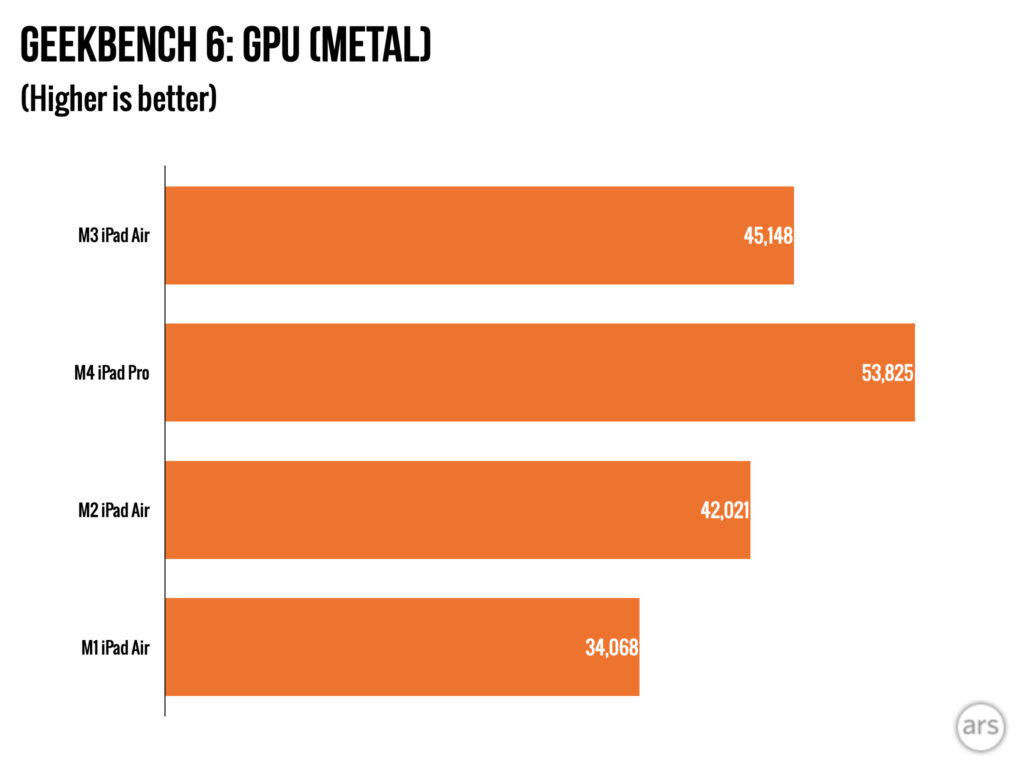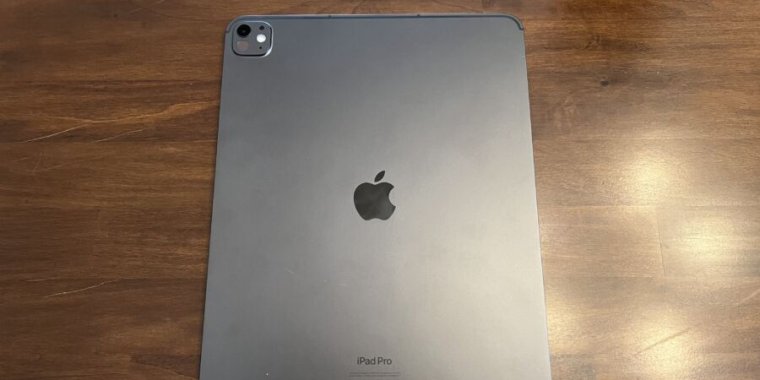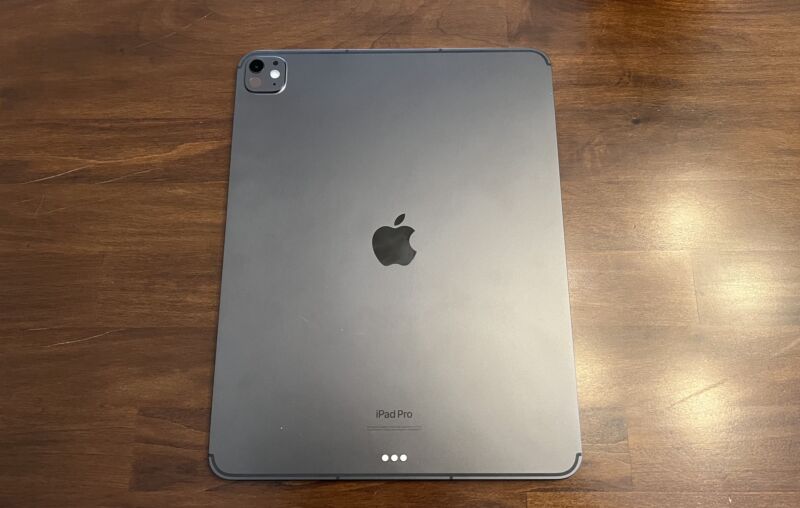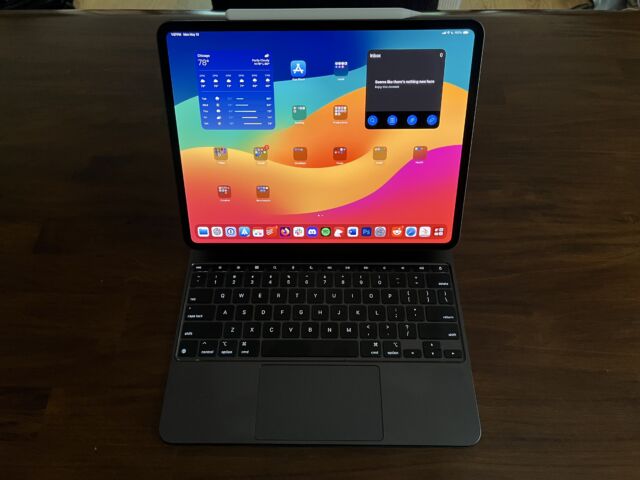2025 iPad Air hands-on: Why mess with a good thing?
There’s not much new in Apple’s latest refresh of the iPad Air, so there’s not much to say about it, but it’s worth taking a brief look regardless.
In almost every way, this is identical to the previous generation. There are only two differences to go over: the bump from the M2 chip to the slightly faster M3, and a redesign of the Magic Keyboard peripheral.
If you want more details about this tablet, refer to our M2 iPad Air review from last year. Everything we said then applies now.
From M2 to M3
The M3 chip has an 8-core CPU with four performance cores and four efficiency cores. On the GPU side, there are nine cores. There’s also a 16-core Neural Engine, which is what Apple calls its NPU.
We’ve seen the M3 in other devices before, and it performs comparably here in the iPad Air in Geekbench benchmarks. Those coming from the M1 or older A-series chips will see some big gains, but it’s a subtle step up over the M2 in last year’s iPad Air.
That will be a noticeable boost primarily for a handful of particularly demanding 3D games (the likes of Assassin’s Creed Mirage, Resident Evil Village, Infinity Nikki, and Genshin Impact) and some heavy-duty applications only a few people use, like CAD or video editing programs.
Most of the iPad Air’s target audience would never know the difference, though, and the main benefit here isn’t necessarily real-world performance. Rather, the upside of this upgrade is the addition of a few specific features, namely hardware-accelerated ray tracing and hardware-accelerated AV1 video codec support.
This isn’t new, but this chip supports Apple Intelligence, the much-ballyhooed suite of generative AI features Apple recently introduced. At this point there aren’t many devices left in Apple’s lineup that don’t support Apple Intelligence (it’s basically just the cheapest, entry-level iPad that doesn’t have it) and that’s good news for Apple, as it helps the company simplify its marketing messaging around the features.
2025 iPad Air hands-on: Why mess with a good thing? Read More »
